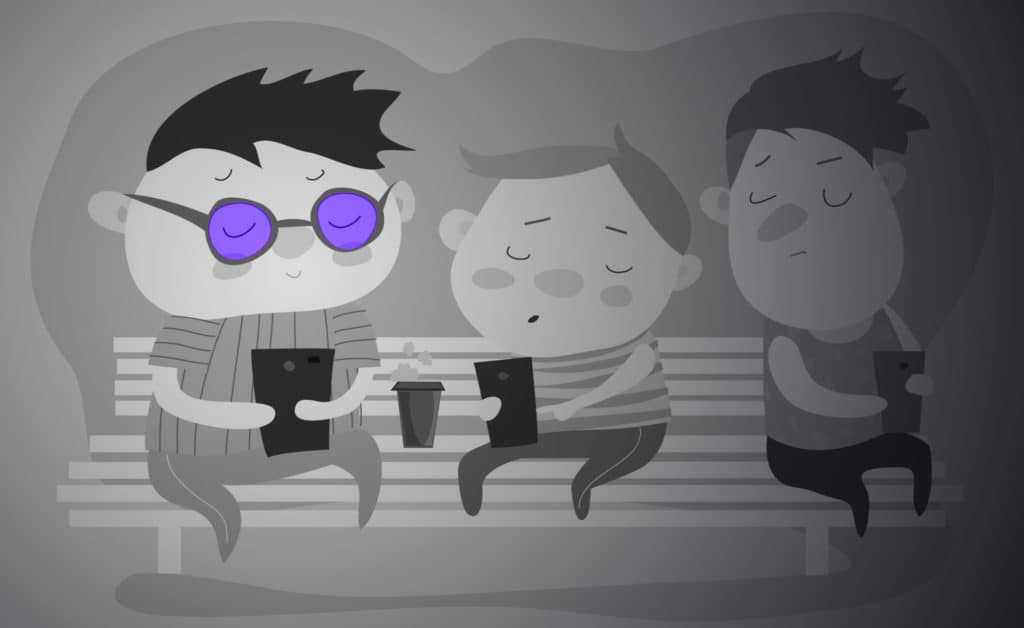In 1999, I suffered a concussion (mTBI) from a minor car crash that left me quite severely impaired for eight years. I was universally told by leading physicians, “no one in your situation ever gets better.” Yet as a result of cognitive restructuring therapy, and neurodevelopmental optometry—each of which takes advantage of our brain’s phenomenal plasticity (wherein one part of the brain can take over for damaged parts), I did fully recover. In my book “The Ghost in My Brain” based on the 1,200 pages of notes taken over a decade, I give the details of my impairment and also of my stunningly rapid recovery.
Concussion is a quiet epidemic, with more than three million reported each year in the U.S. alone. My own intuition, consistent with recent research, suggests that this reporting misses many undetected mTBIs that still have serious consequences. For example, a recent study of Rugby players wherein baseline testing was done prior to the season, and all players were tested for concussion, showed that for every one concussion we knew about, five more were flying under the radar.
[http://www.jns-journal.com/article/S0022-510X%2815%2900102-1/abstract]
Because the symptoms from concussion and those of learning difficulties like attention deficit disorder (ADD) can be so similar, as scientists we must at least suspect that some of these learning problems would respond to the cognitive and visual system treatments I received. We might also be suspicious that some learning problems were actually caused by prior, undetected minor brain injuries. A slip on the ice? A soccer ball hitting a child’s head? A toddler mishap on the stairs?
In addition to my own rather phenomenal experiences, the following episode from one of my trips to the see Deborah Zelinsky, O.D., at her Mind-Eye Connection clinic—a practice that emphasizes neurodevelopmental optometric rehabilitation—gives some background on why I might raise such provocative suspicions.
Practices like Dr. Zelinsky’s make use of a battery of tests that might take two hours to complete. One such test, which is quite magical to experience, is the Z-BellTM test. The doctor rings differently pitched bells in different right/left, high/low quadrants while a sitting patient (with his eyes closed) reaches out to touch the bell. Essential to understanding how the test works is the knowledge that we have three retinal processing systems that filter over 60 million incoming signals down to 1.2 million outgoing ones: our central vision (the main system of concern to a standard optometrist), our crucially important peripheral processing vision system (that sets the context for cognitive processing, including how we process mental images), and a collection of equally crucial non-visual retinal processing systems that have direct links to systems such as for hormonal balance, posture, and emotions. Peripheral and non-visual retinal systems each have critical return feedback loops from the body.
During the Z-bellTM test the doctor tries out various sophisticated lenses and prisms, colored tints, and occlusion filters (opaque strips over a part of one or both lenses) which address the balance among the retinal systems. The patient is asked to reach out and touch the bell, but because the patient’s eyes are closed the non-visual retinal systems (which can operate with very little light) are now emphasized. When non-visual retinal processing is off kilter, the patient’s 3D spatial body- sense, and 3D spatial auditory maps will be off (where they are in the space around them), and if they can’t reorient, they’ll miss the bell in one or more quadrants, waving their finger around in space a foot away from the bell. When a prescription lens fixes the problem, then like “feeling the force” from a Star Wars movie, the patient will immediately situate himself in space, and correctly find the bell every time. It is eerie to take the test yourself, and can be stunning to watch.
On this occasion I saw Dr. Zelinsky puzzling over an interesting case. A friend had asked me to accompany her with her son in his early teens who had had minor nervous ticks for years. Additionally, although extremely bright, the boy nonetheless had great difficulty concentrating on his studies. You could see that when working on homework problems he twisted all around in his chair as though he were being tortured. Tears of frustration came to his eyes, and the result on the page was chaotic. After getting a basic prescription as a starting point, Dr. Zelinsky spent additional time trying many different lenses, and some occlusions (diagonally, on the right side of both lenses). Although everything else was in order, she just was not satisfied with his Z-bellTM test performance.
Then, all at once, in this great and revealing moment of the scientist at work, she exclaimed, “Oh I know who he is… he is one of those purple kids… Watch this!” She found a sheet of purple celluloid, held it up in front of the boy’s eyes, and ran him through the Z-bellTM test. At last he performed flawlessly.
I was at the house when the boy’s purple-tinted (and occluded) glasses arrived two weeks later. The transformation was stunning. His ticks were immediately reduced to almost nothing. When he sat down to study math problems it was like watching a different boy: his written columns of scratch work and answers were all ordered, and he calmly sat in his chair and proceeded from one problem to the next until the entire problem set was complete. No tears!
Our retinas really are extensions of our brains, and by some estimates up to eighty percent of our brains are involved with retinal processing. Treating all three retinal systems and the delicate balance between them may be crucial for optimal brain performance.
Clark Elliott, Ph.D.
ClarkElliott.com
Copyright 2015 Clark Elliott, all rights reserved.

Success Stories, Traumatic Brain Injury
The Purple Kid’s Retinas
by Clark Eliott
